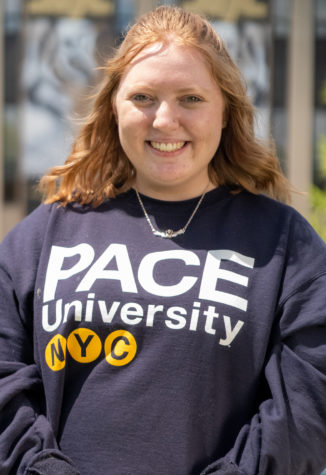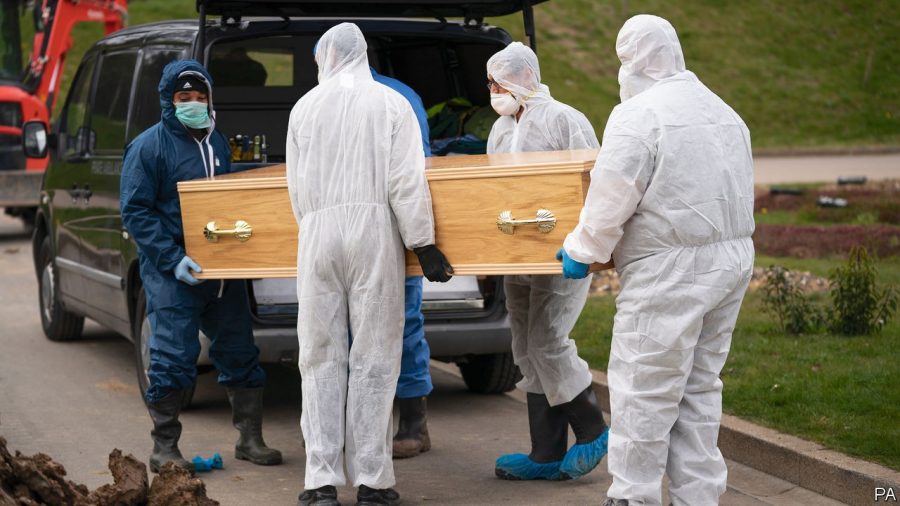Death by Discrepancies
Some of the most at-risk COVID-19 patients are dying as others are being vaccinated.
image courtesy of The Economist
Many COVID-19 patients have died just before their vaccination eligibility.
It’s been just a little over twelve hours since my grandfather died from COVID-19, and it has yet to sink in. My mind knows that he’s gone, but my heart refuses to accept it.
Just a few weeks ago, we sat at my kitchen table and played trivia games. We discussed the Thomas Edison Home in West Orange, New Jersey and decided that we’d take a trip there together. But this morning, he took his final breaths, and I have yet to say goodbye.
Between my grandfather’s age and his ongoing medical problems, he was considered high-risk. My family did everything in our power to protect him from the virus, but it was ultimately a trip to the emergency room that infected him—a trip that had to be made.
Pain and grief are givens after losing a loved one, but what hurts more is the timeline. My grandfather was just two weeks away from receiving the COVID-19 vaccine. And while the first dosage wouldn’t have completely saved him from getting the virus, he may still be alive today if he had it.
Ever since the beginning of Pennsylvania distribution phase 1-A, vaccine rollout has been a nightmare. For starters, my step-sister, a healthy 27-year-old woman, recently got her vaccination. Though she works in the healthcare industry, her job in the insurance department is nowhere near as essential as my high-risk grandfather was.
I don’t blame my step-sister for getting the vaccine. She was presented with an opportunity—one that’s exceptionally rare right now—and took advantage of it. Even myself, as a grocery store employee, will likely be offered one in the upcoming months. When that day comes, how can I say no? Who knows when the opportunity will arise again?
In theory, Pennsylvania’s distribution plan seems great, but it has some major issues. As non-essential people like my step-sister are being protected from the virus, the at-risk elderly like my grandfather are dying.
That’s the problem our nation is facing. The CDC reports that almost 36 million vaccines have been distributed to states, but less than 17 million have actually been administered. And of that, less than six percent have received both of their doses.
So, where are these valuable vaccines going? The easy answer is nowhere. Many have continued to sit on the shelves they were originally placed on. Though health officials have the vaccine, they don’t have all of the resources needed to distribute it. Hospitals are understaffed and struggling to manage the influx of patients.
Needless to say, trying to supply an entire country with not one, but two doses of a vaccine is bound to be difficult. Yet there are ways that we can be more efficient with what we have.
The healthcare sector contains more front-line workers than any other sector, but there are departments within healthcare corporations that are not at especially high risk of exposure to the virus. If there’s a hierarchy in our state for vaccine distribution, there should be one inside the essential companies as well.
For now, it’s a no-win situation. It’s unlikely that anyone will turn down a vaccine out of the goodness of their hearts. If they turn it down today, it will likely go to another non-essential “essential” worker tomorrow.
While I’m happy that my step-sister is safe from the virus, I’m incredibly angry that my grandfather was not. The discrepancies within our distribution phases are killing our especially at-risk citizens. We need leaders to immediately revisit the current policy, to hold essential companies accountable, and to give what we have to the people who truly need it.

Lucie Flagg is a senior this year. She enjoys the finer things in life, such as sushi, napping, and her dog, Daisy. Along with writing for The Uproar, she also contributes to NATV. Outside of school, Lucie works at Naturally Soergel's, and she watches Impractical Jokers whenever that's not happening. Lucie plans to attend Pace University in New York City next year to pursue a career in media production.



